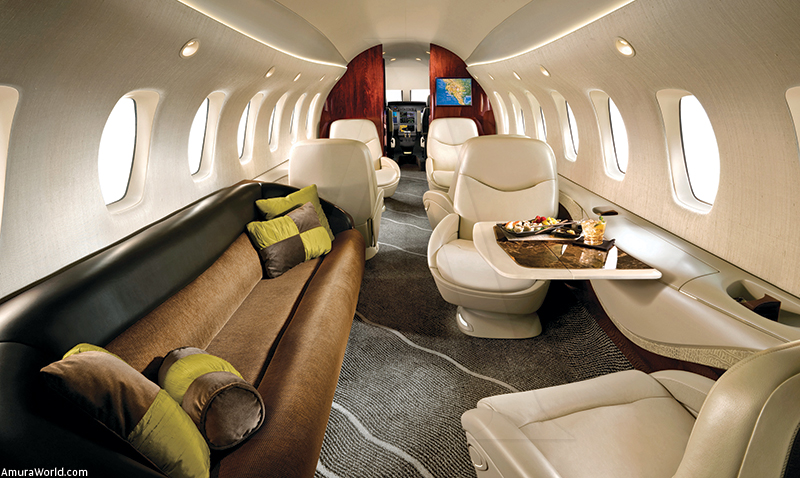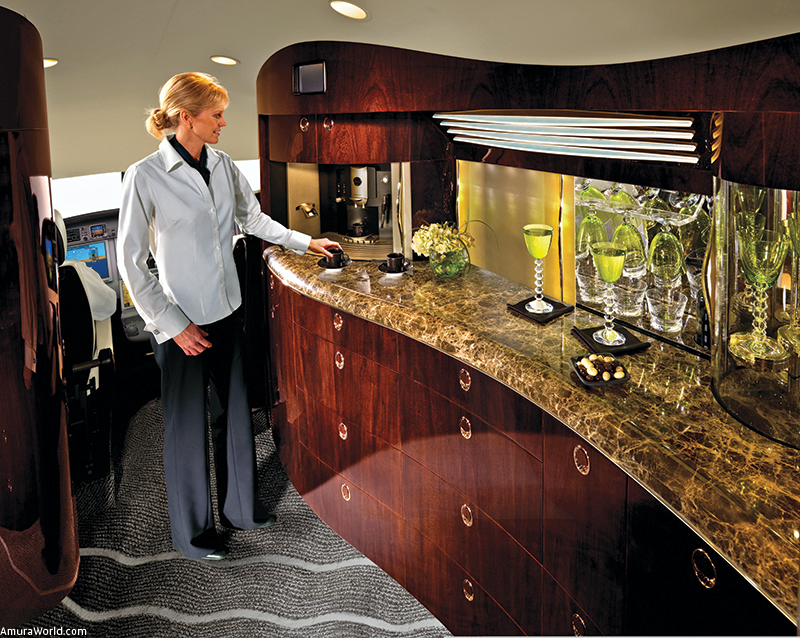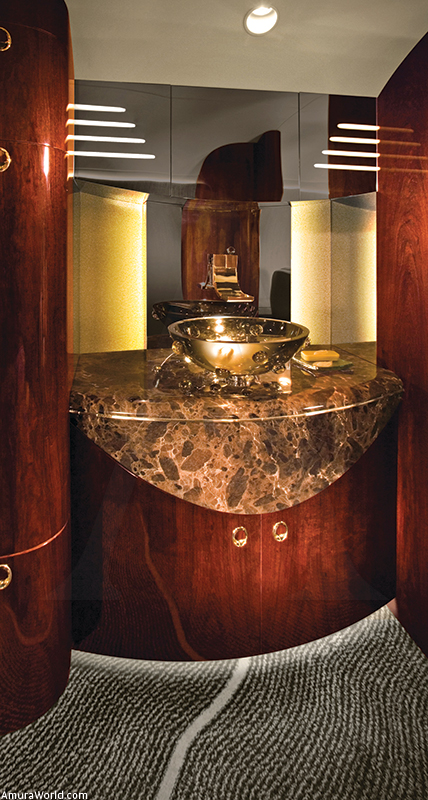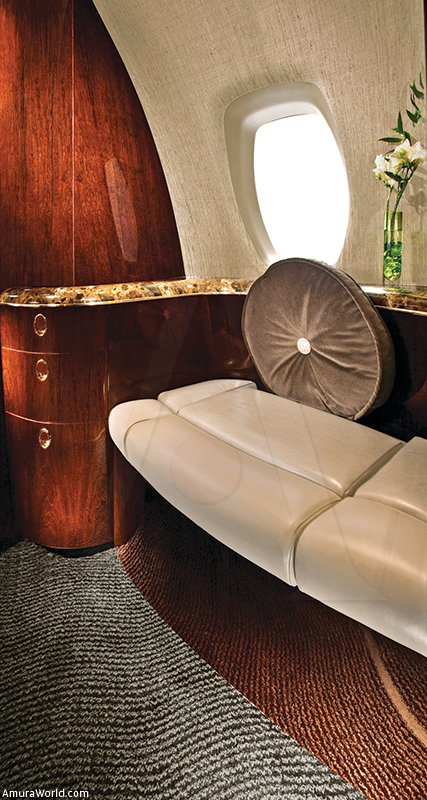Conquering the Skies
The new Cessna model, the 850 Citation Columbus, carries in its name the challenge of changing the concept of intercontinental business jets,which has nowbecome a reality. The Citation Columbus is designed for continent-tocontinent flights with a range of 4,000 nautical miles (7,408 kilometers), at a speed of Mach 0.80, carrying eight passengers in total comfort.
Cessna has also entered into strategic alliances with three large companies. Pratt &Whitney Canada will provide all models with the PW810 engine, Rockwell Collins will supply the advanced Pro Line Fusion avionics systemand there is an initial agreement with Spirit AeroSystems to manufacture the fuselage and thewings using the latest technology This totally-new Cessna is the largest business jet up to now and it is hoped that its com
This new jet will open up new transcontinental routes suchasMunichto New York, London to Dubai, Sydney to Singapore, Sao Paulo to Miami and many others. In other words, the world will be its only limit.
The Columbus maintains the design philosophy of the Citation line by using an aluminum structure and the cabin is characterized by maximizing the interior space. The jet ismanufactured with an approach based on reliability and ease of maintenance.
Avionics
• New Rockwell Collins Pro Line Fusion systems
• 3 high-resolution panoramic LCD displays
• Head-up Guidance System(HGS)
• Graphic flight planning, synthesized with improved vision.
• The award winning Rockwell Collins MultiScan Hazard Detection system.
• Pilotsmay operate the systems conventionally or by using voice recognition technology.
• The Pro Line Fusion system is designed to be adjusted to current and technological requirements, such as Controller Pilot Data Link Communications (CPDLC), Required Navigation Performance (RNP) navigation and self-separation.
Comfortable Interiors
The 11.10 meter-long cabin will be very spacious and comfortable in the passenger seating area, far removed from anything that its competitors may offer. The cabin will be 1.5meters longer than any cabin currently available.
With a configuration of up to 10 passengers, the cabin has a very generous seating area and a low, flat floor to offer very generous headroom of 1.85 meters. The interior will offer a balance of style and functionality with great comfort and the flexibility required by passengers on intercontinental flights. Passengers will benefit from a unique cabin design that offers a unique level of head and shoulder room.
Lighting is a combination of direct LED and controlledworking lights that provide a comfortable working environment. The smooth leather and cushioned seats are completely reclinable. Wireless ports allow the connection of PDAs, cellular telephones, laptops and any other gadget to communicate with the rest of the world. The jet will also have themost advanced software for communications with the pilot and land in order to obtain continually-updated information. The aircraft will have interior and exterior luggage holds that offers the largest interior that its space in its class.
The Columbus promises to be one of the most advanced and fuel-efficient business jets, as well as being the cleanest and most environmentally friendly; something that is demanded by aviation authorities all over the world.
The 850 makes its debut with the new generation Pratt & Whitney PW810 engines, with 8,830 pounds of thrust, which are environmentally friendly, while reducing fuel consumption, pollution and noise. The PW810 engine boasts the latest advances in terms of materials, aerodynamics and design technologies.
The pilot’s console will be equipped with the Rockwell Collins Pro Line Fusion avionics console, which combines the proven capabilities of the Pro Line 21 console with significant technological advances.
The totally integrated flight deck will feature four 15” panoramic displays working in harmony with the graphic flight plan, increased synthesizer visibility, the multi-award winning Rockwell CollinsMultiScan Hazard Detection Systemand an optional overhead display.
In terms of the exterior design, achieved using the CFD process, the Columbus engineers managed to isolate eachrelevant point so that the airflowover the aircraft’s surface can detect even the smallest relevant point to calculate the effects of changes to the outline. The result is an airframe designed to achieve the best of all possible combinations - the highest speeds with the lowest wind resistance and the greatest efficiency.
And if that weren’t enough, the jet can take off fully laden on runways as short as 5,400 feet (1,646 meters). Cessna plans to obtain the Federal Aviation Administration certification by the end of 2013 in order to begin deliveries in 2014.
The initial estimated price of the Citation Columbus is US$27million in 2008
Technical Data
Passengers
10+2 (Crew)
Total Length
77 ft
Wingspan
80 ft
CabinLength
36.3 ft
CabinHeigth
73 inch
Range
4,000 nauticalmiles
Speed
Mach 0.80
Engines
2, PW810
Avionics
Rockwell Collins Pro Line Fusion
Text: Laura Velázquez ± Photo: Rafael Luna Grajeda.









